
外国ルーツの人々との
「多文化共生社会」、
どう実現するか
「多文化共生社会」、
どう実現するか
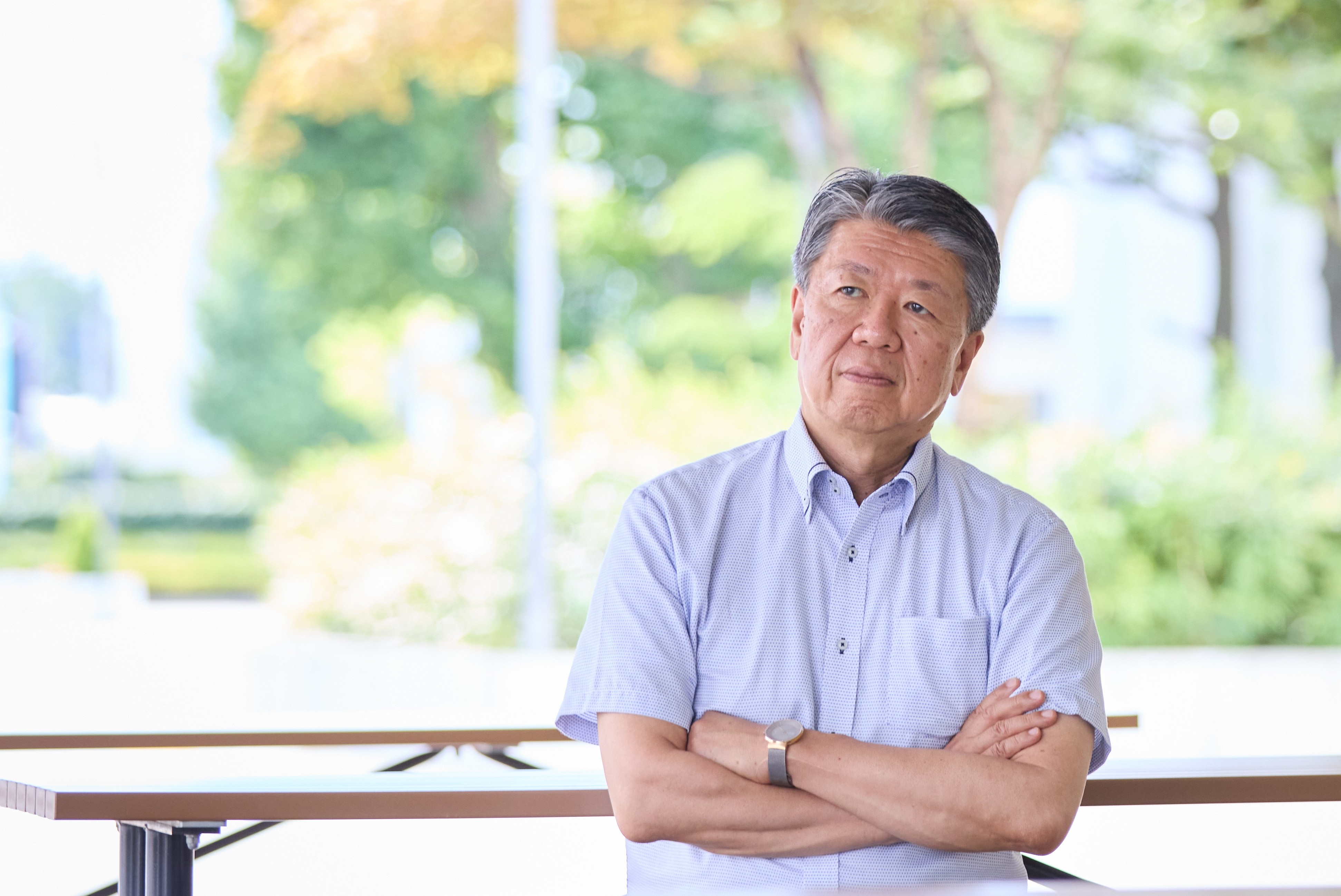

#亜大の研究
小井土 彰宏 教授
国際関係学部 多文化コミュニケーション学科
2025.11.01
シリーズ企画「面白くなければ学問じゃない!」では、亜細亜大学の教員陣の研究内容やエピソードを紹介します。第18回の特集は、国際関係学部 多文化コミュニケーション学科 小井土 彰宏 教授です。

フランスでの衝撃体験が「国境」への意識を変えた
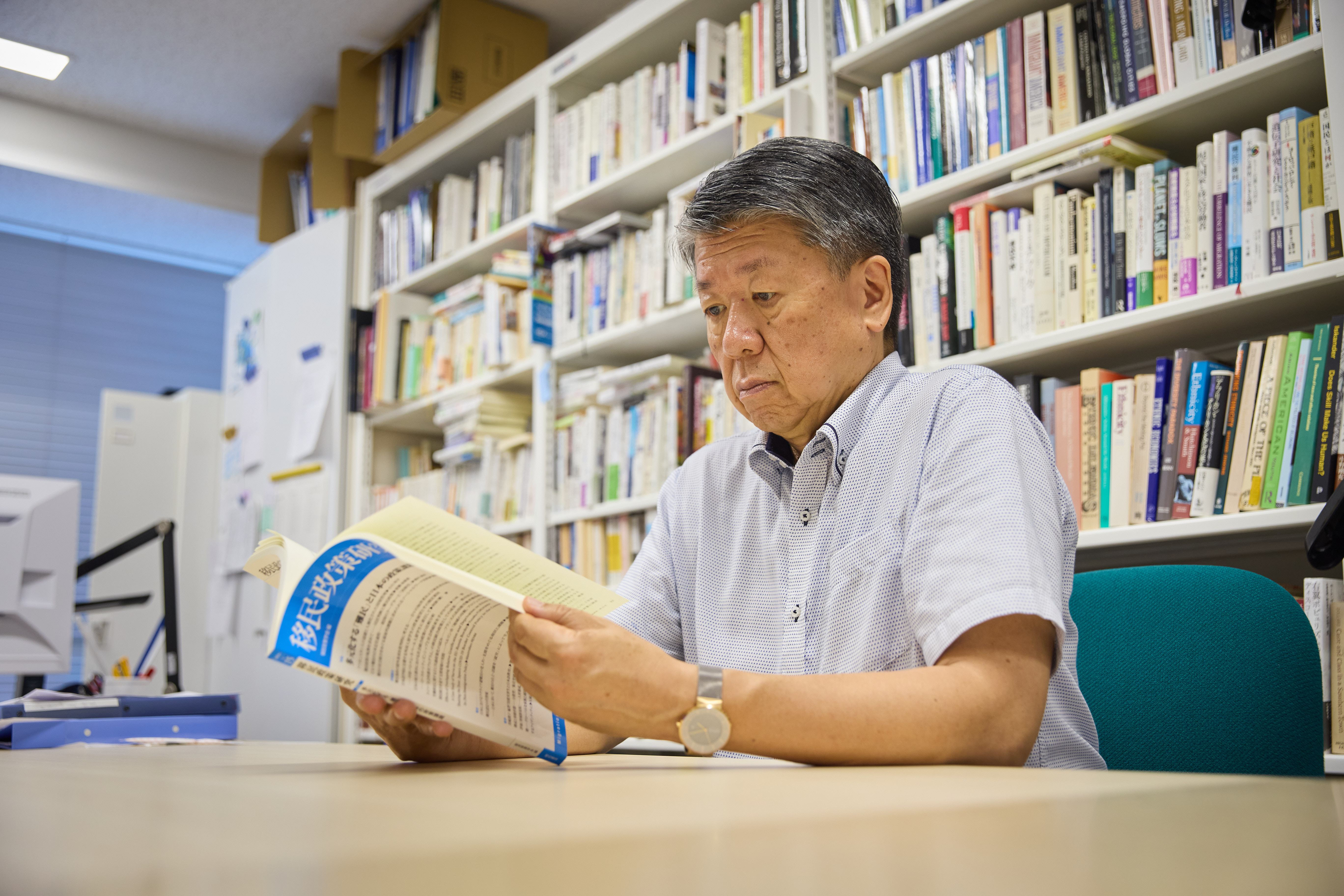
「1980年代初め、私は東京大学で比較社会学を専攻していました。しかし、そこで教えられている疑いもなく「Nation(国民社会)」という単位で分析するこれまでの社会学の手法や、それを受け入れている同じ世代の学生たちに違和感を持つようになっていました。オイルショックによる混乱や環境問題のように、もはや一国だけでは捉えられない事象が起こっているじゃないか、と。大学院では「国境を越える」ものや人に焦点をあてて研究することにしましたが、この方向に進みだす際に確信を持てたのは、ささやかな、でも強烈なヨーロッパでの体験でした。
卒業前、初めての海外旅行でヨーロッパへ行きました。まだEUになる前、ECの時代です。ユーレイルパスを使うと国境を越えて西ヨーロッパ全体を移動できる旅は、とてもワクワクするものでした。ある日、スペインからパリ行きの指定寝台車に乗りこんだ時のこと。白人たちのいる客室を何車両も通り抜け、たどりついた自分のコンパートメントは、明らかに「有色人種」だけが集められた区画。同室には、2人のアフリカ系の乗客がいました。夜中、ピレネーを越えてフランス国境に差しかかった時、突如フランスの官憲がやってきて同室の1人を取り囲み、厳しい尋問を始めました。結局彼は連行され、翌朝になっても戻ってきませんでした。
自分がマイノリティとして車両を区分された事実。アフリカ系の乗客に対するフランス人の異様に高圧的な態度。そして、自分が難なく通過できる国境も、ある人にとっては試練の境界となること──。あの時の衝撃と何ともいえない不快感は、いまだに忘れられません。
卒業前、初めての海外旅行でヨーロッパへ行きました。まだEUになる前、ECの時代です。ユーレイルパスを使うと国境を越えて西ヨーロッパ全体を移動できる旅は、とてもワクワクするものでした。ある日、スペインからパリ行きの指定寝台車に乗りこんだ時のこと。白人たちのいる客室を何車両も通り抜け、たどりついた自分のコンパートメントは、明らかに「有色人種」だけが集められた区画。同室には、2人のアフリカ系の乗客がいました。夜中、ピレネーを越えてフランス国境に差しかかった時、突如フランスの官憲がやってきて同室の1人を取り囲み、厳しい尋問を始めました。結局彼は連行され、翌朝になっても戻ってきませんでした。
自分がマイノリティとして車両を区分された事実。アフリカ系の乗客に対するフランス人の異様に高圧的な態度。そして、自分が難なく通過できる国境も、ある人にとっては試練の境界となること──。あの時の衝撃と何ともいえない不快感は、いまだに忘れられません。
アメリカ留学とアメリカ・メキシコ国境での研究体験
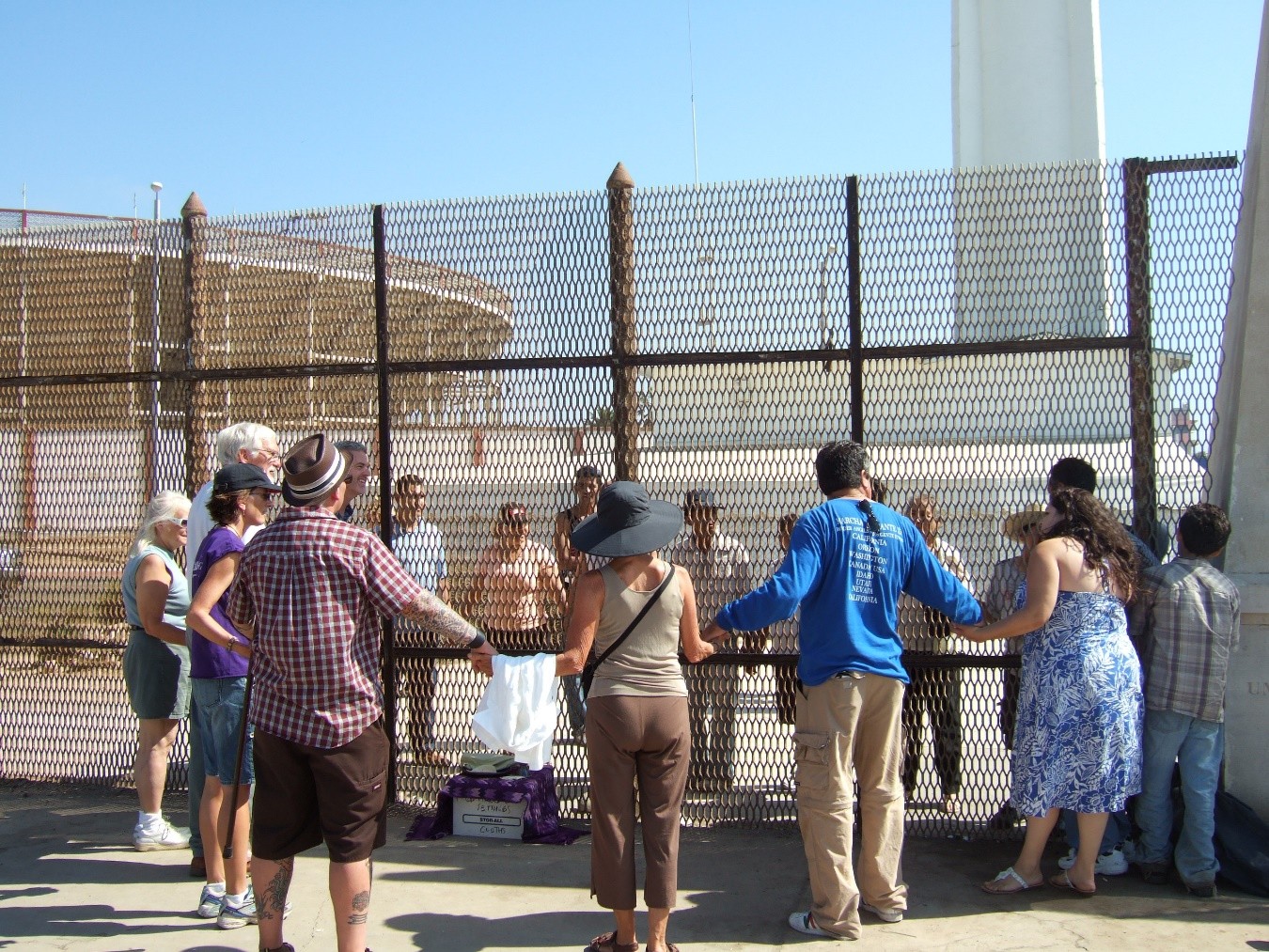 アメリカ−メキシコ国境で、規制強化のために分断された家族たちが国境フェンスを挟んで手をつなぎあい、その絆を「壁」を越えて確かめ合う日曜日のミサの様子
アメリカ−メキシコ国境で、規制強化のために分断された家族たちが国境フェンスを挟んで手をつなぎあい、その絆を「壁」を越えて確かめ合う日曜日のミサの様子
27歳の時、アメリカ東海岸でワシントンD.C.に近いジョンズ・ホプキンス大学で研究するチャンスを得て渡米。定期的に西海岸に行き「世界最先端の先進国」と「典型的な途上国」が隣接する「アメリカ−メキシコ」間の国境におけるものの生産や人の移動について、調査・研究を始めました。
私が留学した1980年代後半、アメリカや日本の企業は、アメリカ市場向けの製品を生産する工場群を国境地帯のメキシコ側に次々と建設していました。賃金を安く抑えられるうえ、原材料や部品を無関税で持ち込める優遇制度もあったためです。私は、国境をある意味“利用した”この仕組みに興味を持ち、実際にどういう産業でどのようにものづくりをしているのか、自動車部品、電子製品、家具など多様な工場を巡って調査をしました。途中、カリフォルニア大学に客員研究員として移り、1992年まで研究を続けました。
当時とても驚いたのが、交通インフラすら十分に整備されていないカオスのような地域にある工場なのに、その内部では最新鋭の半導体の自動装着技術などを使った機械が導入されていたことです。途上国に思い浮かべがちな「安い労働力を生かした労働集約型の工場」ではなく、手作業はロボットだと難しい複雑な工程のみ。生産の効率化・安定化と不良品削減のための選択とのことでしたが、この時は大変な衝撃を受けました。
いまになって振り返ってみると、これがその後のNAFTA(北米自由貿易協定)、メキシコの工業製品輸出の想定以上の急増、そしてNAFTAの見直しへとつながっていくことがよく分かります。当時はもちろん知る由もありませんでしたが、現場で新鮮な発見ができたことは価値があったなと思います。
私が留学した1980年代後半、アメリカや日本の企業は、アメリカ市場向けの製品を生産する工場群を国境地帯のメキシコ側に次々と建設していました。賃金を安く抑えられるうえ、原材料や部品を無関税で持ち込める優遇制度もあったためです。私は、国境をある意味“利用した”この仕組みに興味を持ち、実際にどういう産業でどのようにものづくりをしているのか、自動車部品、電子製品、家具など多様な工場を巡って調査をしました。途中、カリフォルニア大学に客員研究員として移り、1992年まで研究を続けました。
当時とても驚いたのが、交通インフラすら十分に整備されていないカオスのような地域にある工場なのに、その内部では最新鋭の半導体の自動装着技術などを使った機械が導入されていたことです。途上国に思い浮かべがちな「安い労働力を生かした労働集約型の工場」ではなく、手作業はロボットだと難しい複雑な工程のみ。生産の効率化・安定化と不良品削減のための選択とのことでしたが、この時は大変な衝撃を受けました。
いまになって振り返ってみると、これがその後のNAFTA(北米自由貿易協定)、メキシコの工業製品輸出の想定以上の急増、そしてNAFTAの見直しへとつながっていくことがよく分かります。当時はもちろん知る由もありませんでしたが、現場で新鮮な発見ができたことは価値があったなと思います。
国境研究を通じてのスペインへの関心の広がり
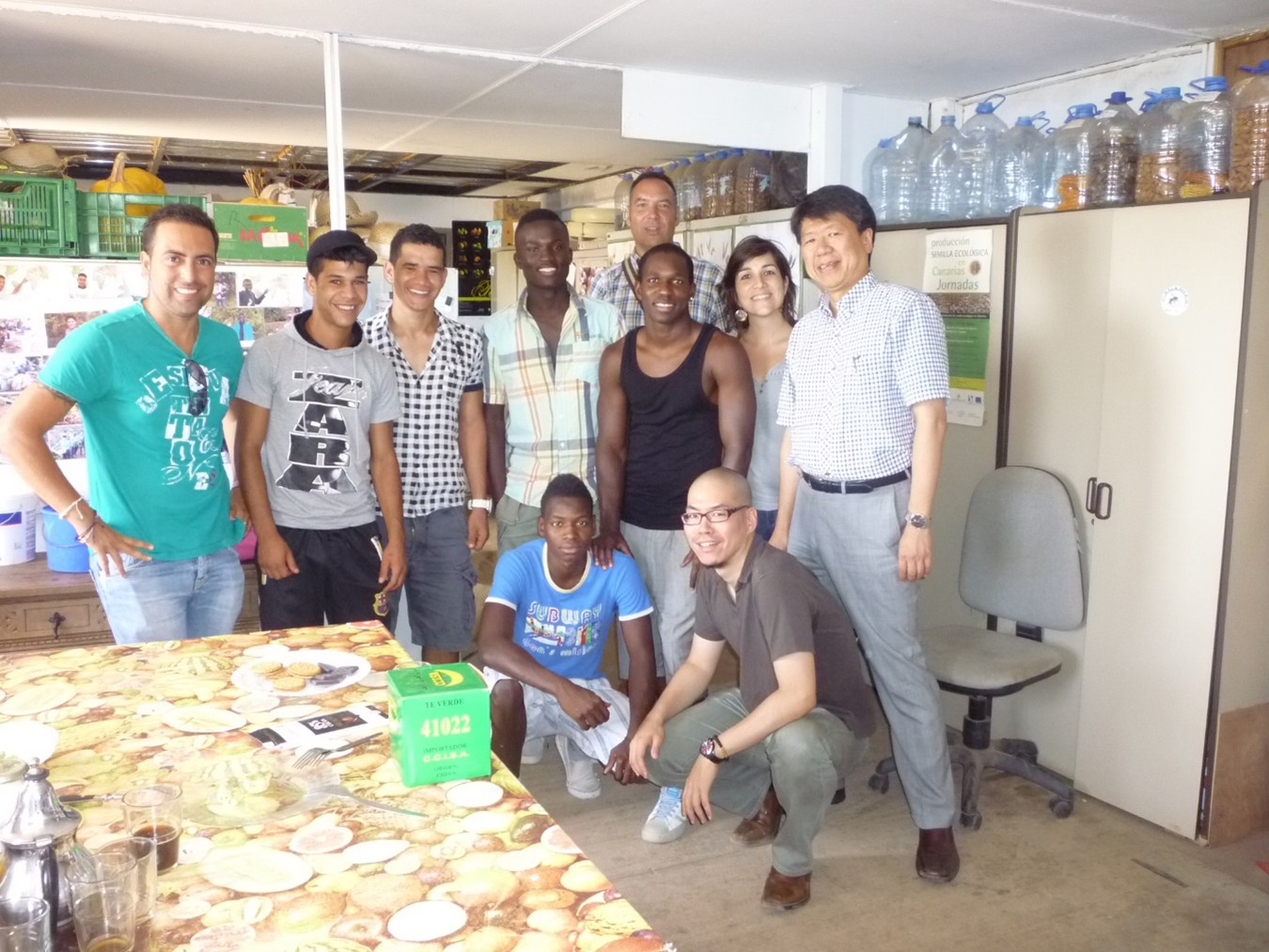 スペインとアフリカの境界地帯、カナリア諸島での移民との多文化共生施設での光景。国境管理の研究に行ったつもりが、ここでも共生実践が進んでおり、アフリカ系の若者が農園で働きながらスペイン社会に適応し始めていた
スペインとアフリカの境界地帯、カナリア諸島での移民との多文化共生施設での光景。国境管理の研究に行ったつもりが、ここでも共生実践が進んでおり、アフリカ系の若者が農園で働きながらスペイン社会に適応し始めていた
日本に帰国し、いくつかの大学で教鞭をとった後、今度はスペインに1年間の在外研究で滞在しました。当初、「アメリカ−メキシコ」と「ヨーロッパ−アフリカ」の国境の比較をしようと考えていましたが、スペインの移民受け入れ政策が非常に進んでいることを知り、徐々にそちらの研究に軸足を置くようになりました。
スペインは1980年代後半、少子高齢化を理由に移民受け入れへと政策を転換。いまから20年ほど前の時点ですでに、行政・市民・移民団体が政策について議論する場「社会統合のための全国フォーラム」が設置されて政策の連携が大変進んでいるうえに、各地で積極的に「異文化間媒介者」という移民と地域住民との橋渡し役を担う専門職まで作られていました。いまの日本がお手本にできる要素もあるのではないかと思います。
スペインで生活していると、皆がごく自然に「共生」している姿をよく目にしました。私がマドリードで借りていたアパートの地区には、スペイン人のほかにラテンアメリカ系やムスリム系の住民も暮らしていましたし、夕方の公園ではスペイン人とラテンアメリカ系移民がチェスやカードゲームを楽しんでいる。街の八百屋では、モロッコ系移民の店主の妹に「よ、美人(Guapa!)ちゃん。これまけてよ!」とスペイン人のおじいさんが絡み、20代の頭の回転のいい妹に「そんなの無理よ」と軽くあしらわれる(笑)。スペインでも一部で移民排斥の動きはありますし、うまくいっていることばかりではないですが、ギスギスしていないおおらかな雰囲気が印象に残っています。
スペインは1980年代後半、少子高齢化を理由に移民受け入れへと政策を転換。いまから20年ほど前の時点ですでに、行政・市民・移民団体が政策について議論する場「社会統合のための全国フォーラム」が設置されて政策の連携が大変進んでいるうえに、各地で積極的に「異文化間媒介者」という移民と地域住民との橋渡し役を担う専門職まで作られていました。いまの日本がお手本にできる要素もあるのではないかと思います。
スペインで生活していると、皆がごく自然に「共生」している姿をよく目にしました。私がマドリードで借りていたアパートの地区には、スペイン人のほかにラテンアメリカ系やムスリム系の住民も暮らしていましたし、夕方の公園ではスペイン人とラテンアメリカ系移民がチェスやカードゲームを楽しんでいる。街の八百屋では、モロッコ系移民の店主の妹に「よ、美人(Guapa!)ちゃん。これまけてよ!」とスペイン人のおじいさんが絡み、20代の頭の回転のいい妹に「そんなの無理よ」と軽くあしらわれる(笑)。スペインでも一部で移民排斥の動きはありますし、うまくいっていることばかりではないですが、ギスギスしていないおおらかな雰囲気が印象に残っています。
実は外国人によって支えられている、この国の現実
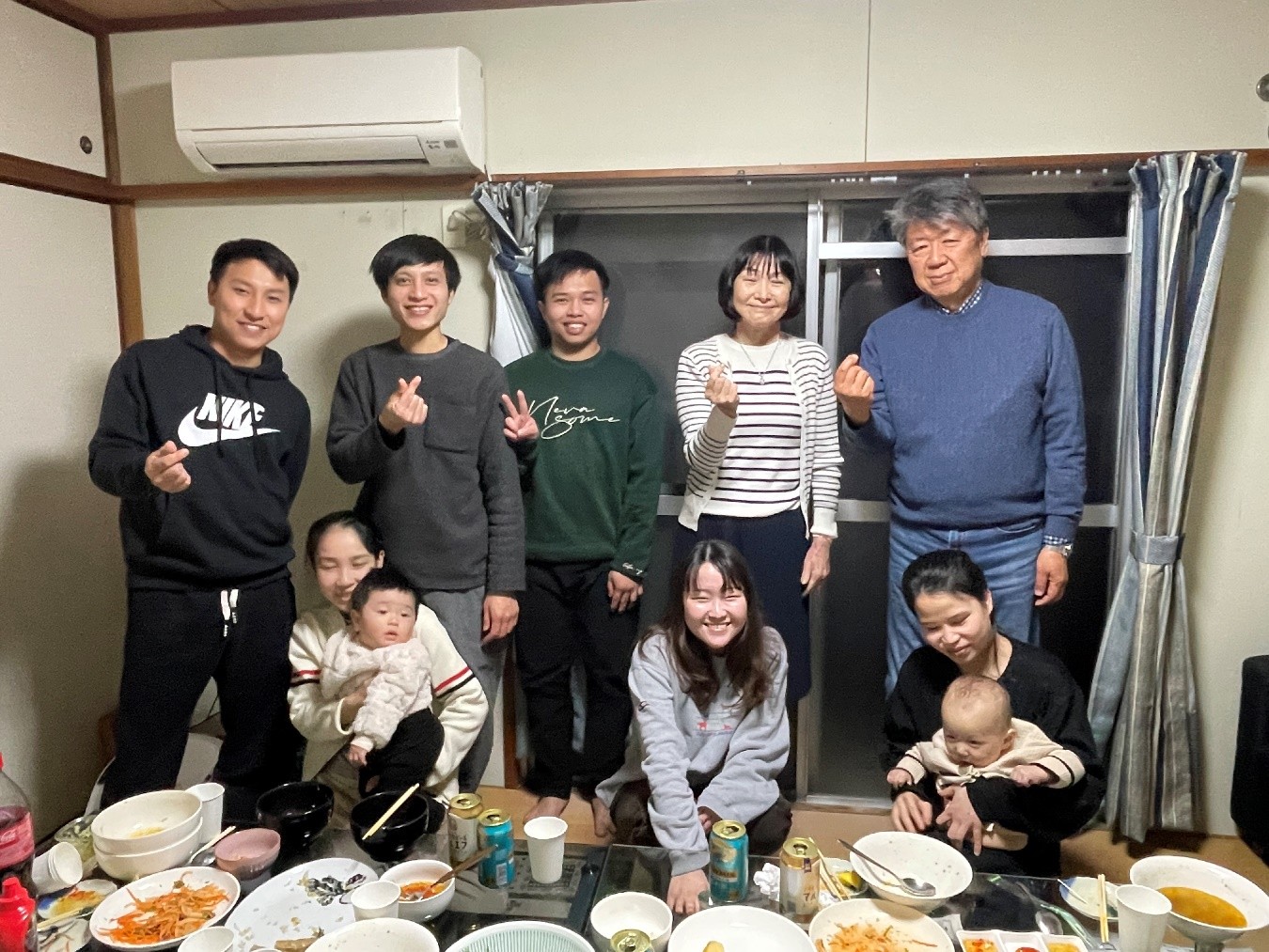 中国地方の山間地の製造業で働く新しい世代のベトナム人労働者たちとその家族(2人の妻と2人の新生児)。機械の設計・製造を担当する彼らの技能レベルは高く、日本語での会話も支障はなかった
中国地方の山間地の製造業で働く新しい世代のベトナム人労働者たちとその家族(2人の妻と2人の新生児)。機械の設計・製造を担当する彼らの技能レベルは高く、日本語での会話も支障はなかった
では、日本の状況はどうでしょうか。近年、コンビニやファミレス、居酒屋などで働く外国人を目にする機会が増えたと感じる人も多いでしょう。ただ、実は我々のあまり目につかない所でも、多くの外国人が働き、日本の様々な産業を支えていることを知っているでしょうか。
世界文化遺産の「日本食」をささえる「漁業」。カツオの一本釣漁は、いまや外国人労働者なしでは成立しないといわれています。カキの殻を取り外す、魚をさばくなどの水産加工の仕事も、その多くを外国人が担っています。「建設業」においても、その存在感は増すばかりです。新国立競技場は外国人労働者がいなければ完成しなかったでしょうし、いま東京中で進行しているインフラ工事やビルの解体・建設も、彼らがいなければ回っていきません。2025年1月時点で、在留外国人は過去最多の約376万人。帰化した人も含めたいわゆる「外国ルーツ」の人の数はこれよりさらに多くなります。
でも、おかしいと思いませんか? 日本の政府は長らく「日本は移民を受け入れません」と言い続けてきました。なぜこれほどの数の「移民」がいるのでしょうか。
答えは簡単。1990年頃からおよそ30年間、日本は正面玄関にあたる “フロントドア”を閉じたまま、勝手口にあたる“サイドドア”を開けて、実質的に外国人を受け入れてきたからです。「日本にルーツがあるから」「母国への技能移転のため」といった様々な理由をつけて、「日系ブラジル人」「技能実習生」「高度技能人材」「看護・介護人材」などとして外国人を受け入れ、少子高齢化による労働力不足を補おうとしてきました。
それもついに限界に達し、初めて“フロントドア”を開けたのが2018年のこと。入管法改正により、14分野の産業で一定の専門性・技能を持つ「特定技能人材」を受け入れるようになりました。さらに2027年度からは、新たに「育成就労制度」が始まる予定。これは、外国人労働者の技能の向上と長期就労を目指して、従来の技能実習制度に代わって始まる制度です。
中長期的な方針など何もないまま、対症療法的に行われてきた日本の移民政策。課題は山ほどありますが、その一つが「技能」(スキル)という概念の曖昧さです。外国人受け入れの根拠を「技能」としておきながら、肝心の中身が十分に議論されていないのです。それぞれの産業で求められる資格・スキルの水準を明確にするとともに、業界の変容や実態と照らして随時見直しを続ける必要があります。一見外国人を選ぶ基準の問題は、実は日本企業における日本人の「同一労働同一賃金」の実現や「キャリアの選択肢」といった日本社会自体が抱える問題を改めて考え直すことにもつながっていくでしょう。
世界文化遺産の「日本食」をささえる「漁業」。カツオの一本釣漁は、いまや外国人労働者なしでは成立しないといわれています。カキの殻を取り外す、魚をさばくなどの水産加工の仕事も、その多くを外国人が担っています。「建設業」においても、その存在感は増すばかりです。新国立競技場は外国人労働者がいなければ完成しなかったでしょうし、いま東京中で進行しているインフラ工事やビルの解体・建設も、彼らがいなければ回っていきません。2025年1月時点で、在留外国人は過去最多の約376万人。帰化した人も含めたいわゆる「外国ルーツ」の人の数はこれよりさらに多くなります。
でも、おかしいと思いませんか? 日本の政府は長らく「日本は移民を受け入れません」と言い続けてきました。なぜこれほどの数の「移民」がいるのでしょうか。
答えは簡単。1990年頃からおよそ30年間、日本は正面玄関にあたる “フロントドア”を閉じたまま、勝手口にあたる“サイドドア”を開けて、実質的に外国人を受け入れてきたからです。「日本にルーツがあるから」「母国への技能移転のため」といった様々な理由をつけて、「日系ブラジル人」「技能実習生」「高度技能人材」「看護・介護人材」などとして外国人を受け入れ、少子高齢化による労働力不足を補おうとしてきました。
それもついに限界に達し、初めて“フロントドア”を開けたのが2018年のこと。入管法改正により、14分野の産業で一定の専門性・技能を持つ「特定技能人材」を受け入れるようになりました。さらに2027年度からは、新たに「育成就労制度」が始まる予定。これは、外国人労働者の技能の向上と長期就労を目指して、従来の技能実習制度に代わって始まる制度です。
中長期的な方針など何もないまま、対症療法的に行われてきた日本の移民政策。課題は山ほどありますが、その一つが「技能」(スキル)という概念の曖昧さです。外国人受け入れの根拠を「技能」としておきながら、肝心の中身が十分に議論されていないのです。それぞれの産業で求められる資格・スキルの水準を明確にするとともに、業界の変容や実態と照らして随時見直しを続ける必要があります。一見外国人を選ぶ基準の問題は、実は日本企業における日本人の「同一労働同一賃金」の実現や「キャリアの選択肢」といった日本社会自体が抱える問題を改めて考え直すことにもつながっていくでしょう。
未来への「チャレンジ」は「チャンス」でもある
またゼミでは、フィールドワークを重要視しています。「教育」「介護労働」「難民」など、ゼミ生の関心あるテーマに沿って、様々な現場に足を運んでいます。例えば、群馬県の外国人集住都市を訪問した際は、ブラジル人学校の生徒に生活の様子を教えてもらったり、日系ブラジル人2世の女性に日本語中心の学校生活から親の母国に行きポルトガル語を学び、ポルトガル語に染まった後、今度は実務のための英語といった語学習得の難しさについて話を聞いたりしました。また、神奈川県の介護施設では、ベトナムやネパール、インドネシアから来て活躍している職員に仕事上の苦労ややりがいをヒアリング。様々な人生のストーリーに触れる経験はゼミ生にとって得るものが大きいようで、普段の授業の何倍も熱心に取り組んでいます(笑)。
亜細亜大学は、留学生はもちろん、外国ルーツの学生も非常に多いのが特徴です。私の授業やゼミでも、「僕は国籍が二つあります」「私のルーツは4分の1が日本、4分の3はフィリピンとアメリカです」といった話を聞くことがあります。見知らぬ誰かではなく身近な人の身に起こっている話なら、より関心を持ちますし真剣に向き合いますよね。これからの時代に求められる、多文化共生の肌感覚や対応能力が自然に磨かれていく──。これは、亜細亜大学の強みであり大切な価値であると思っています。
世界中どこの国を見渡しても、「多文化共生社会」がすんなりと実現した例はありません。一歩進むと反動で揺り戻しが起こり、またそれを乗り越えて次の一歩を踏み出す。その道のりは、大変な準備と努力を必要とする「チャレンジ」であり、新たなよりよい社会を作っていく「チャンス」でもあります。この国で多文化共生社会をどう実現させていくか、皆さん、どうか一緒に考えてみませんか!